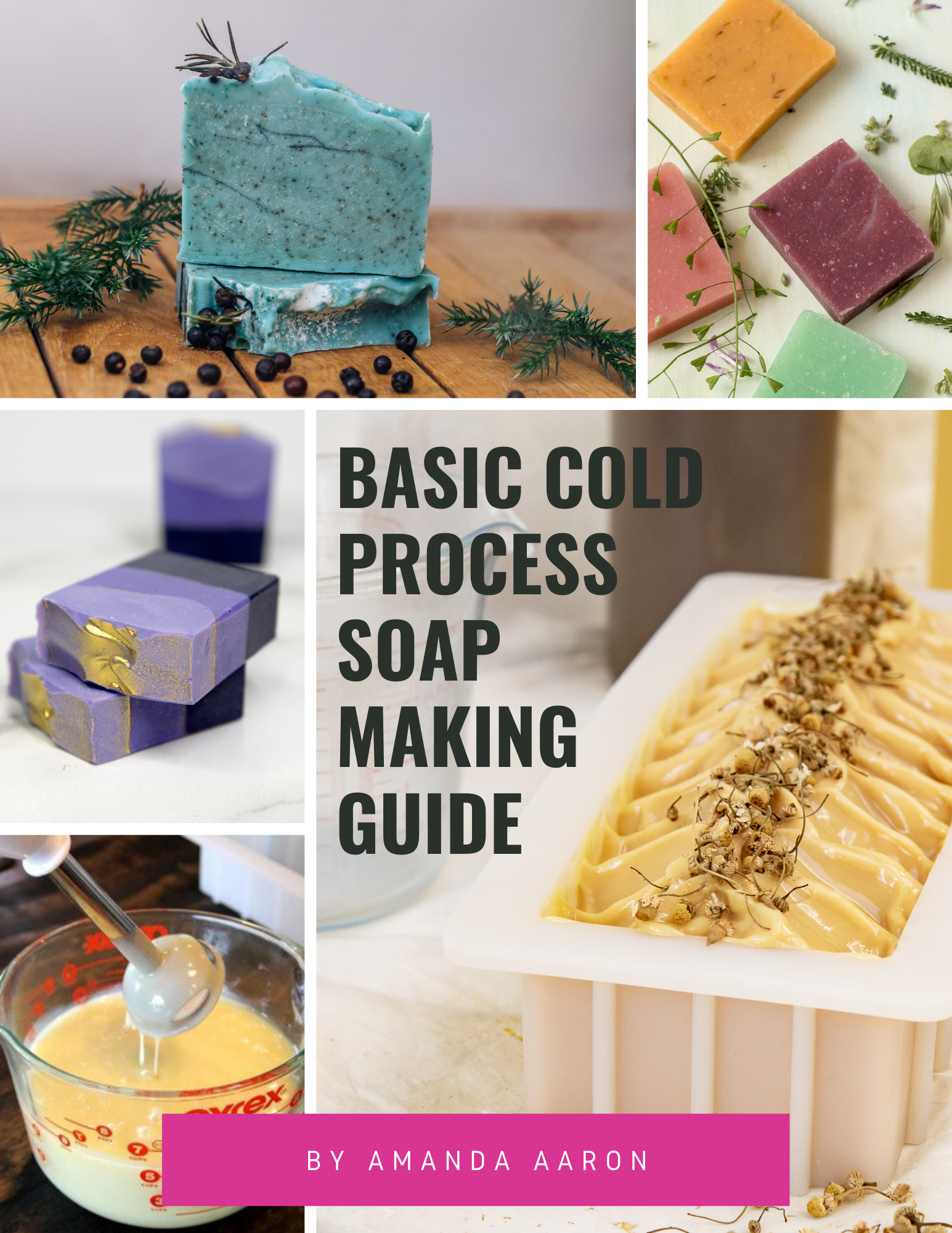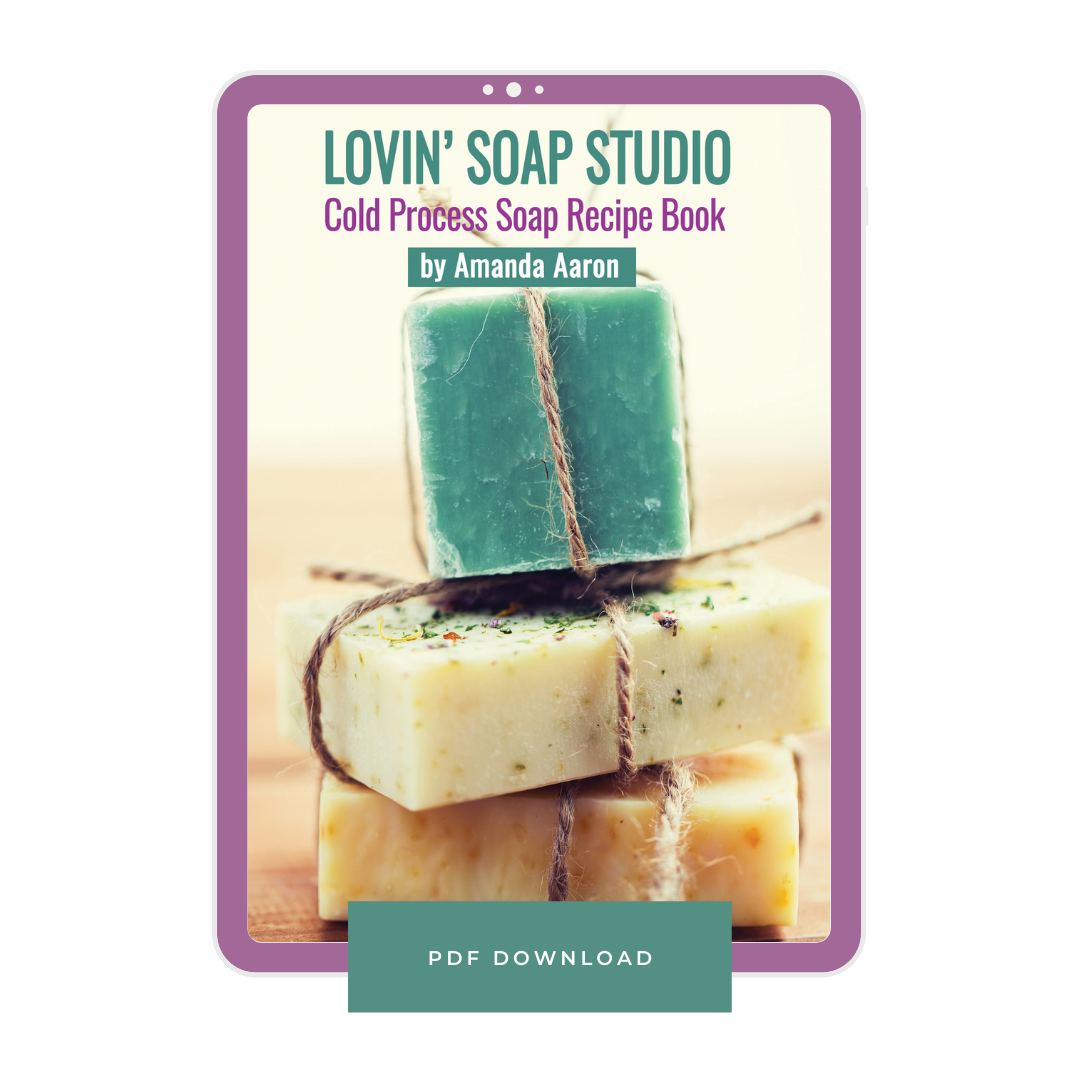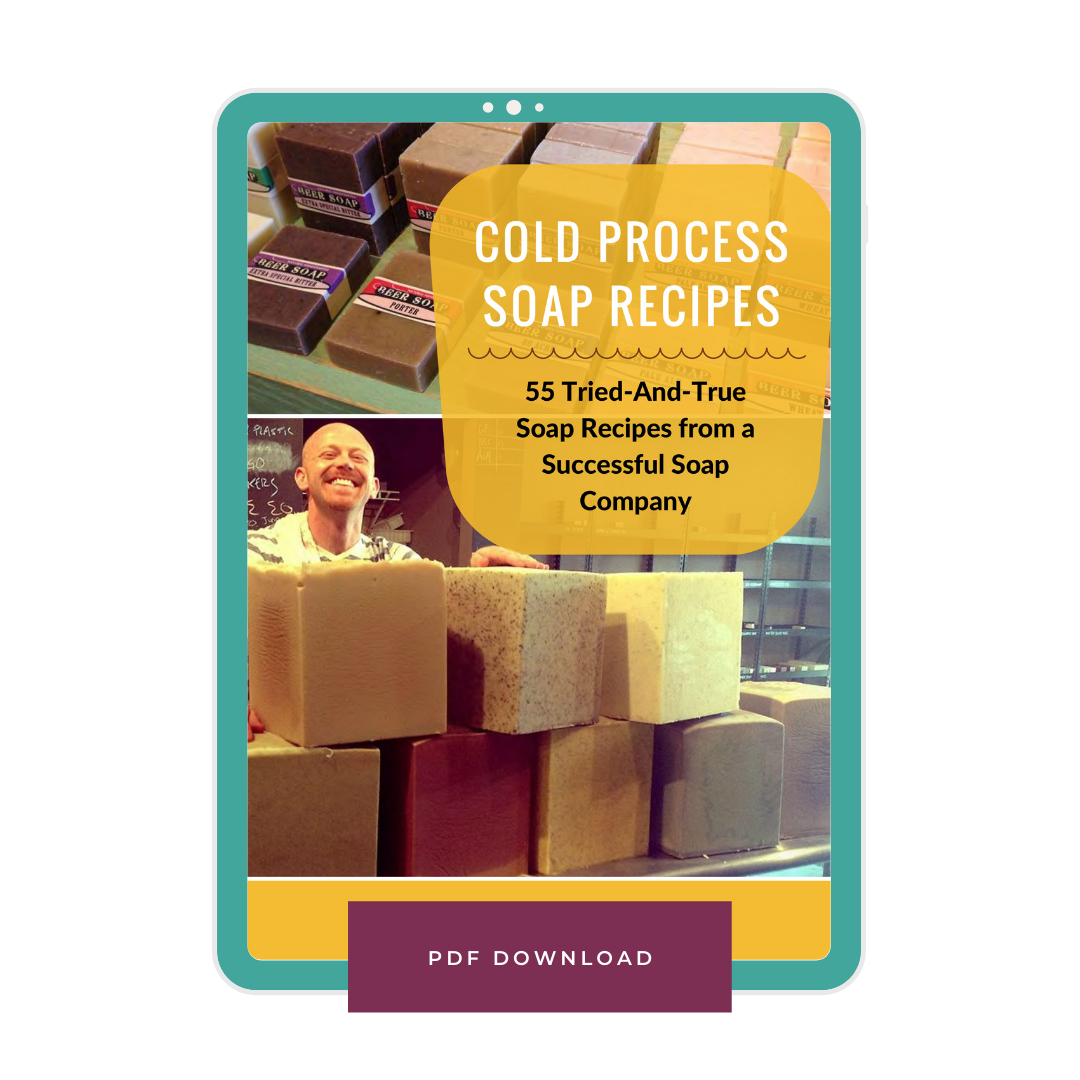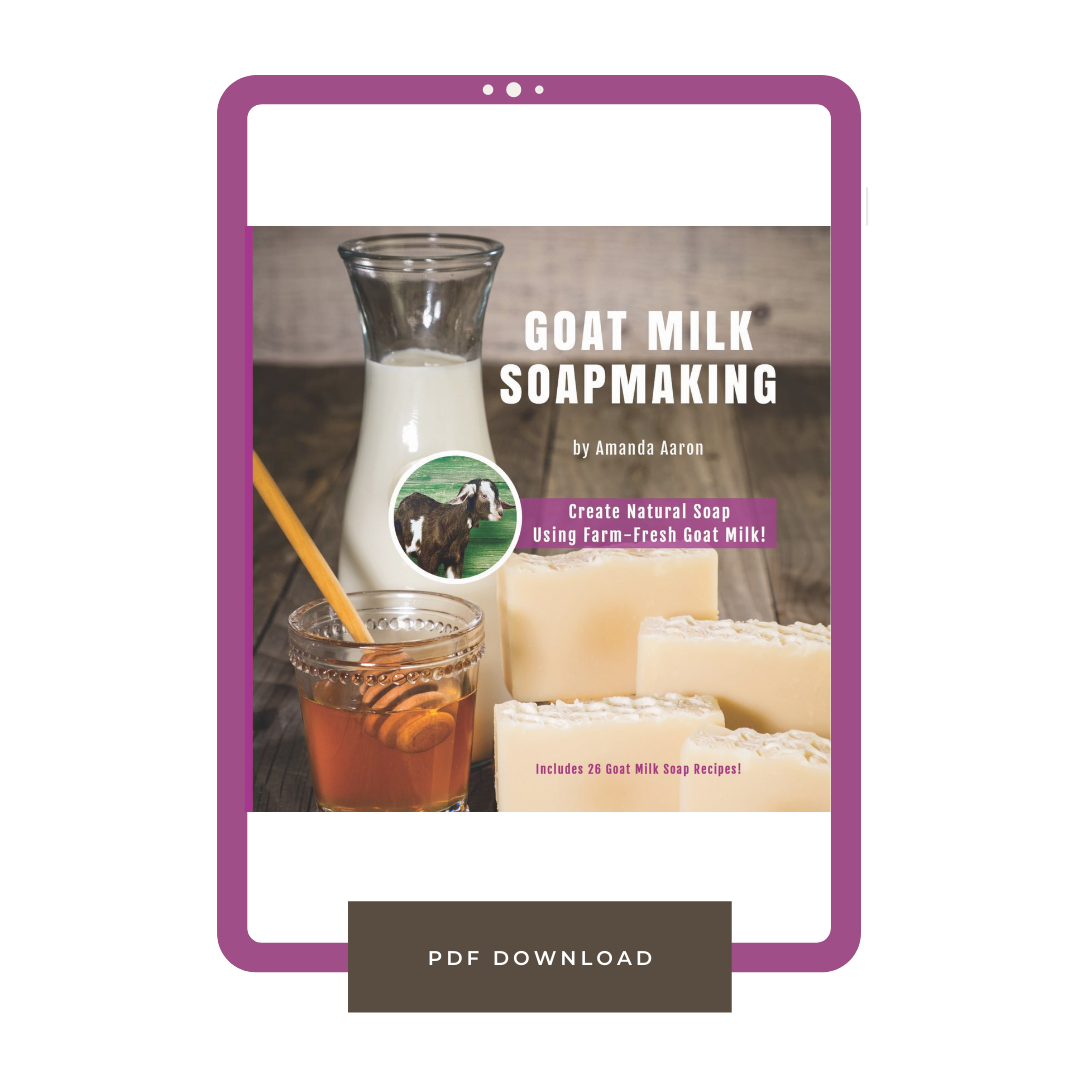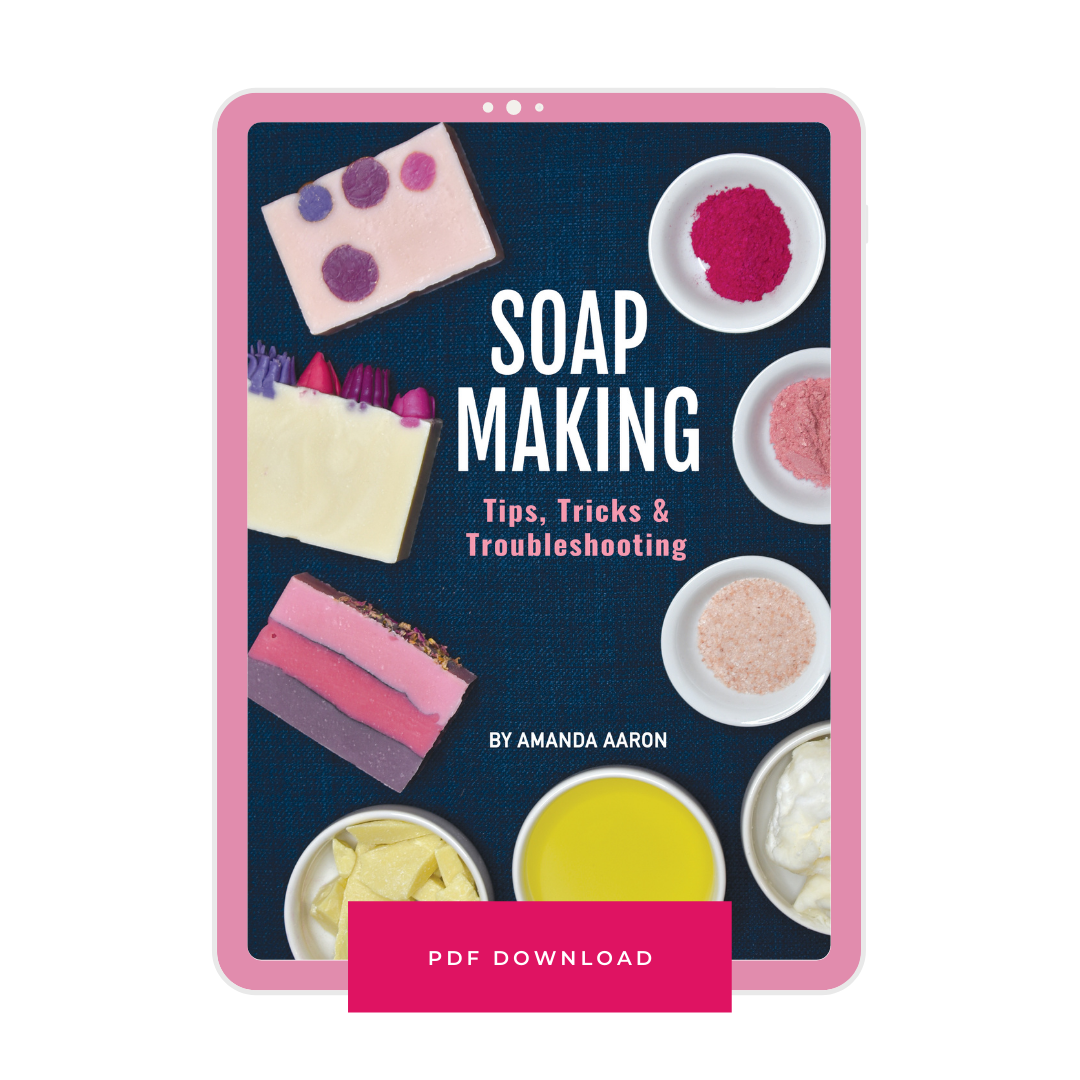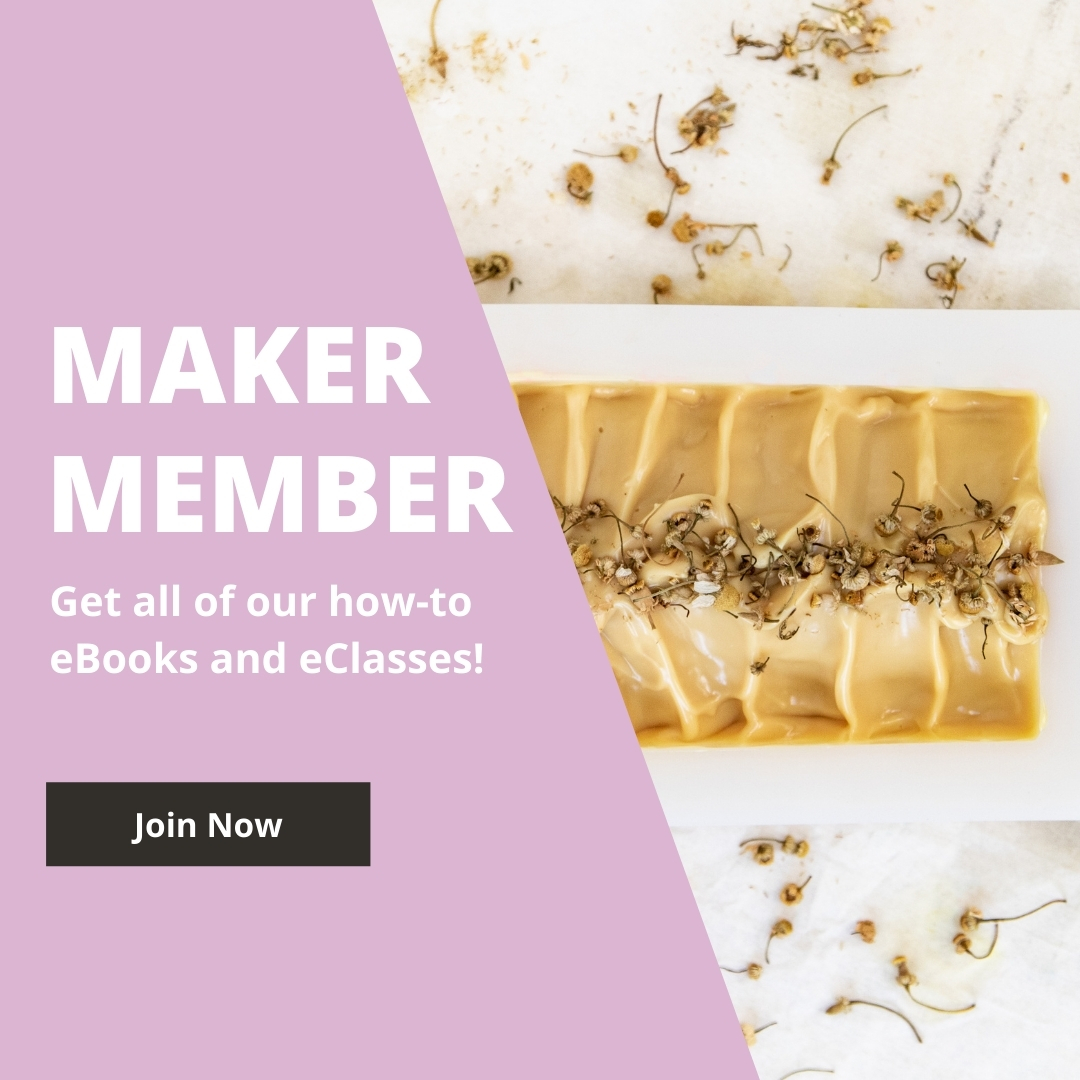Welcome to the Art of Soap Making!

Looking to try your hand at making cold process soap? You’re in the right place!
Hi, I’m Amanda Aaron of Lovin’ Soap Studio. This page is the resource I wish I had when I first started soap making. My introduction to cold process soap wasn’t smooth, but yours can be!
Before I forget, if you haven’t signed up to be on the Lovin’ Soap Studio email list, you’re missing out! Sign up here to get all the soapy goodness with soapmaking tutorials, recipes and blog posts from around the industry.
Let’s get started.
STEP ONE: Back to Basics: What is Soap?
Soap cleans your skin by emulsifying oil and water together. In soap making, a combination of base oils is mixed with a lye solution. The chemical reaction, which then takes place, is called saponification. After saponification, you have a completely new substance, soap!
Looking for an easy way to get started making your own soap? Download your copy of the Free Cold Process Soap Making Guide here.
STEP TWO: Equipment & Tools
Guess what? You don’t need a bunch of expensive specialty equipment when just starting out! Here are the primary tools you’ll need to get started making cold process soap:
- Digital Scale
- Mixing Utensils
- Stick Blender
- Soap Mold
- Containers for Weighing out Oils and Mixing Soap
Check out my favorite soap making tool list here!
STEP THREE: Ingredients
Handcrafted soap is made up of oils, lye (sodium hydroxide) and liquid (ie. water). The base formula you use for all your cold process soap making is:
Start with the base of oils + lye + liquid, then add scent, color and additives.
My Soapmaking Oil Chart provides everything you’ll need to know about the various base oils, butters and fats that are used in soap making.
STEP FOUR: Scenting Your Soap
Both fragrance oils (synthetic) and essential oils (natural) are used to scent soap.
Fragrance oils are produced in a lab with synthetic components or a mix of synthetic components and natural essential oils. Essential oils are extracted from part or the whole of a plant by distillation or expression. Essential oils are considered a more natural way to fragrance soap.
STEP FIVE: Coloring Your Soap
There are many types of soap colorants you can use to color your cold process soap. Here are some of the more widely used types:
Natural Pigments (Oxides and Ultramarines) – Once mined from the earth, oxides and ultramarines are now lab-created to ensure purity.
Mica – Mica is what gives cosmetics, paint and other products sparkle. Mica is colored using pigment or dye coatings.
Natural Colorants – My favorite colorants to use are natural colorants including spices, herbs, clays and other botanical powders resulting in beautiful natural colors of cold process soap.
Cosmetic Pigments – These are popular these days for those wanting super bright colors in soap. Cosmetic pigments (also called neons and brights) are plastic coated dyes.
Dyes – Dyes are synthetically produced colorants that are commonly found in the food and cosmetic industry.
Confessions of a failed batch of soap!
Let me tell you about my first batch of soap. I had read a few books, got up the courage to work with lye and made my first batch of soap. I geared up in my goggles and gloves, measured out my soap ingredients and stirred… and stirred… for about an hour! I finally poured the soap into my mold only to wake up the next morning to an oozing, squishy mess.
My recipe was horribly off balance (I used way too much water and olive oil). My procedure was chaotic and outdated (I hand stirred). I simply didn’t have enough knowledge to make a successful batch of soap. Thankfully, I’ve learned a lot since that first batch!
At its core, making soap isn’t all that difficult. But once you get the basics down, there’s a whole world of challenges you’ll likely encounter as you advance your soap making techniques.
Soap Making is More Fun with Friends!
Not everyone understands the time, energy and passion that goes into soap making, but we do!
Join our Saponification Nation Facebook Group to find new soapy friends, share inspiring photos of your own soap creations, and gain valuable tips and soap making techniques!
If you are a soap business owner or are aspiring to be one, also check out our NEW Facebook group, Online Marketing for Soap Makers, geared towards online marketing for soap makers. We discuss creating a website, blogging, SEO, email marketing, social media marketing, FB ads…and more!
Ready to go all in?
You can purchase all of these incredible soapmaking resources individually, or get access to ALL of our eBooks and eClasses for a low monthly fee, through our new membership!
Choose your membership track so you get access to exactly the content you need for where you’re at on your soapmaking journey.
Our Maker Membership includes all of our eBooks and eClasses that teach you how to make products! This includes cold process soap, liquid soap, clear transparent soap, lotion/creams, emulsified scrubs, dual lye shave soap…and more!
You’ll also learn design techniques such as swirling soap and piping soap. Our formulating course will have you creating your own unique soap recipes.
With our Business Membership, you’ll receive everything in the Maker Membership plus…
Learn all about creating your e-commerce website, starting a wholesale program, pricing your products, marketing your products and teaching classes to add an additional revenue stream. You’ll go from hobby to business in no time!
You’ll also receive access to Soap. Brand. Launch., our signature 16-module business course, where you’ll learn the process of setting up your business from scratch. From your fundamental business idea to launching your brand, you’ll learn every step to take to create an authentic and life-changing business!

